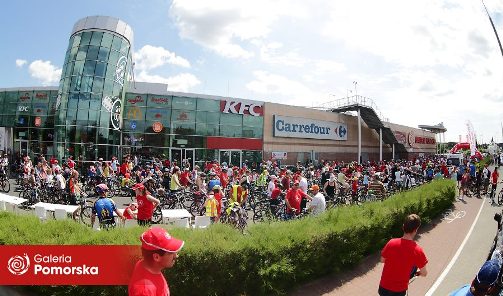When BWP Group first started working in Poland, back in the autumn of 2005, the marketing landscape was very different. The Polish economy was booming following the country’s accession to the EU, foreign investment in the country was on a steep upward curve and the Polish consumer had increasing disposable income and importantly the confidence to spend.
The impact on retail was that for the first time in the country, the role of retail changed from one of necessity to one of leisure.
From a marketing perspective the main focus was delivering regular footfall to the ever increasing number of shopping centres’ being developed in the principal cities. There was no shortage of demand for space from both national and international retailers and a model for hypermarket anchored fashion malls quickly became apparent. They serviced the everyday convenience needs of the traditional shopper, and offered the opportunity for a more indulgent spend to the new breed of affluent consumer. Galeria Pomorska in Bydgoszcz was a typical example jointly anchored with Carrefour and H&M – the city embraced the development. Marketing the Centre was about consumer communication, a mix of education when new brands opened, and driving the leisure message, positioning the Centre as a place to spend time and relax. For the brands (and indeed the landlords) themselves, it was a great opportunity to build successful, profitable retail businesses, without having to focus on much more than the product in-store.
Fast forward eight years and the picture is quite different. Although Poland was the only country in the EU not to experience a recession following the financial crisis of 2009, growth in the economy has slowed (although it is still estimated to run at around 3% for the remainder of 2013 and in to 2014) and consumer confidence has been hit with a large dose of caution. However, Poland is still considered an attractive investment proposition and development in retail (although slower than pre-crisis) is continuing, especially in the secondary Cities. The combination of increased competition, a more cautious and retail savvy consumer and a clear retailer hierarchy has changed the focus of retail marketing in Poland. The demand for the Inditex and LPP fashion brands has driven the market closer together, in terms of retail mix, leaving less opportunity to differentiate through offer alone.
The marketer now has to work (and negotiate) with the retailer before delivering the proposition to the customer.
This proposition can no longer depend on the retail mix or strength of any individual brand names in the Centre – as it is more than likely that the key competition has that same brand, selling the same product at the same price ten minutes away. Marketers and retailers need to co-operate beyond defining the most attractive discounts, but work on the softer, less tangible areas of retail that will help to influence the consumers’ shopping habits, service, visual display, participation in Centre initiatives, all contributing to making the Centre a more compelling destination to shop. This is where the creativity rests in retail marketing, keeping one step ahead of the competition and front of mind with the consumers. The Polish consumer is now empowered with more choice than ever before, both in terms of where to shop, but also how to shop.
Retail development is continuing and so the role of the marketer remains as influential as ever in Poland, but now the need is to work as hard to engage with retailers and build enduring partnerships, as it is to deliver compelling campaigns to the consumer.



